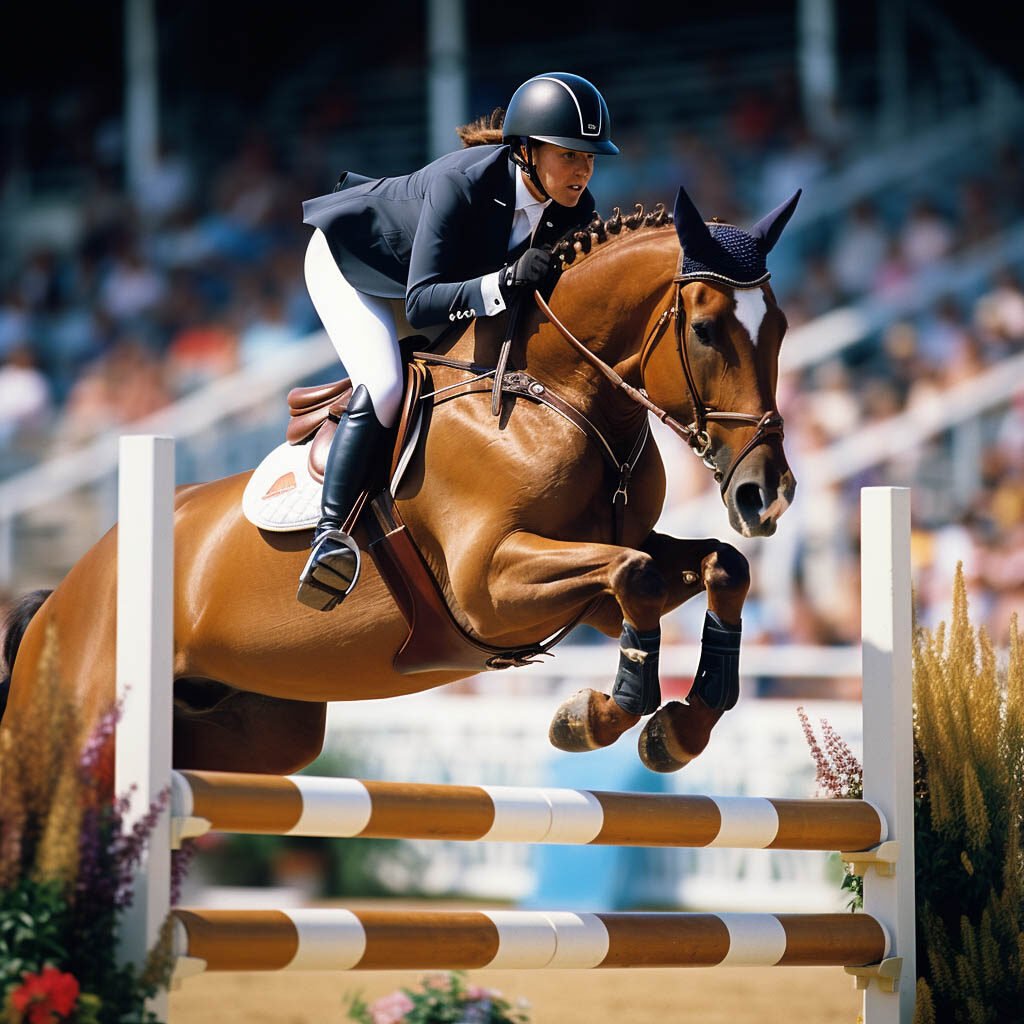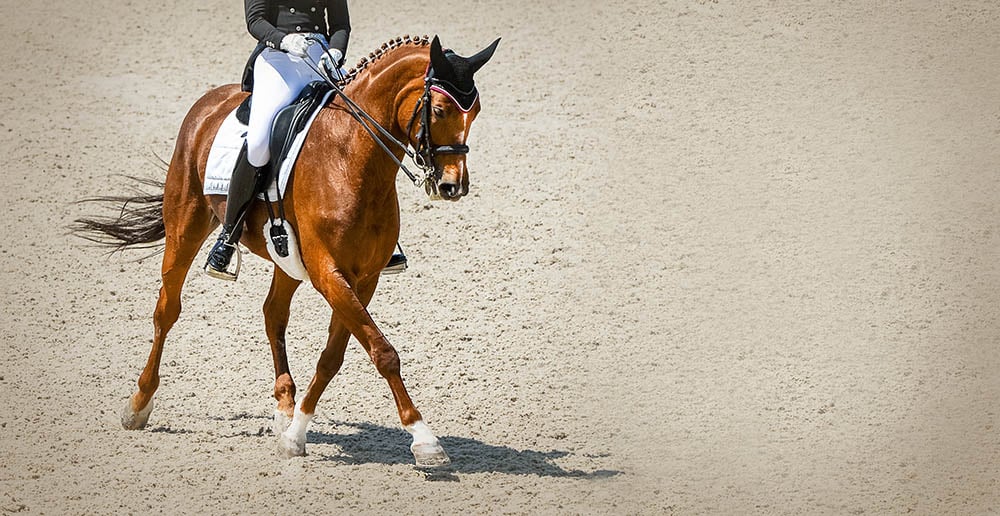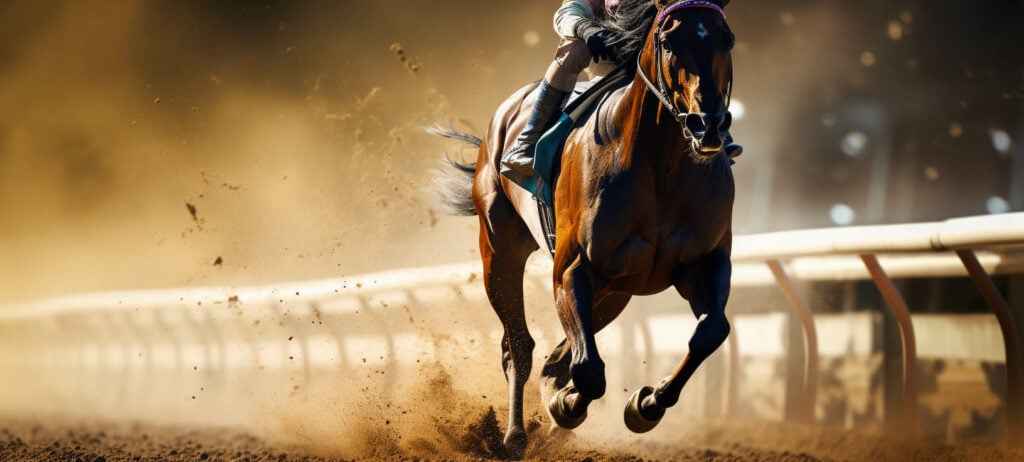Show horses and racehorses are two of the most popular types of horses in the equestrian world. Show horses are trained to perform in various disciplines, including dressage, jumping, and eventing. On the other hand, racehorses are bred and trained specifically for horse racing, where they compete to be the fastest.
While both types of horses are highly valued by horse lovers, they have their differences. Show horses are often bred for their beauty and elegance, while racehorses are bred for their speed and endurance. Show horses are trained to perform intricate movements and maneuvers that showcase their grace and athleticism, while racehorses are trained to run as fast as they can in a straight line.
Despite their differences, both types of horses require a great deal of care and training to reach their full potential. Horse lovers must make careful considerations before choosing a horse to train and care for, as each type of horse has its own unique needs and challenges.
Understanding Show Horses and Race Horses
Defining Show Horses
Show horses are a type of horse that are bred and trained for various competitions and exhibitions. These competitions can range from dressage, jumping, and halter classes to rodeos and trail riding. Show horses are generally bred for their physical appearance, movement, and temperament. They are often groomed and trained to perform specific movements or behaviors that are judged in competitions.
There are several different breeds of horses that are commonly used as show horses, including Arabian horses, Quarter horses, and Thoroughbreds. Each breed has its own unique characteristics and strengths that make them well-suited for different types of competitions.
Defining Race Horses
Race horses are a type of horse that are specifically bred and trained for racing competitions. These competitions can range from flat racing, jump racing, and harness racing to endurance racing. Race horses are bred for their speed, endurance, and agility. They are often trained to run at high speeds for extended periods of time.
Thoroughbred racehorses are the most common type of horse used for racing competitions. They are bred specifically for their speed and agility, and are often trained to run at high speeds for extended periods of time. American Quarter horses are also commonly used for racing competitions, particularly in Quarter Horse racing.
Overall, show horses and race horses are two distinct types of horses that are bred and trained for different purposes. While both types of horses require extensive training and care, they are bred for different characteristics and strengths. Understanding these differences can help individuals choose the right type of horse for their needs and goals.
Breeding and Training
Breeding Techniques
Breeding techniques for show horses and racehorses differ significantly. Show horses are bred for their appearance and temperament, while racehorses are bred for speed and endurance. The breeding process for both types of horses involves selecting the right stallion and mare with desirable traits and characteristics.
For show horses, breeding is often done through artificial insemination to ensure the best genetic match. Breeders also focus on maintaining a desirable bloodline to produce offspring with consistent physical and behavioral traits.
On the other hand, racehorses are usually bred through natural breeding to ensure the best physical traits for speed and endurance. Breeders often look for stallions and mares with a history of success in racing and breeding.
Training Methods
Training methods for show horses and racehorses also differ significantly. Show horses are trained for their performance in specific disciplines, such as dressage, jumping, or halter. Training for show horses focuses on developing their physical abilities, as well as their temperament and behavior.
Racehorses, on the other hand, are trained for speed and endurance. Training for racehorses involves a combination of physical conditioning, such as running and strength training, as well as mental conditioning to prepare them for the stress of racing.
Both show horses and racehorses are typically trained from a young age. Foals are introduced to basic handling and training techniques to prepare them for more advanced training as they get older. Colt and fillies are often separated during training to prevent distractions and ensure they receive the appropriate training.
In conclusion, breeding and training techniques for show horses and racehorses differ significantly. Breeders focus on different traits and characteristics when selecting stallions and mares, and training methods are tailored to the specific needs of each type of horse.
Disciplines and Events
Show Jumping

Show jumping is a popular discipline that involves horses jumping over a series of obstacles. The aim is to complete the course in the fastest time possible without knocking down any of the jumps. Show jumping is a highly competitive sport, with events taking place all over the world. Some of the most prestigious show jumping events include the Badminton Horse Trials, the Cheltenham Festival, and the Grand National.
Dressage

Dressage is a discipline that focuses on the horse’s ability to perform precise movements. The aim is to create a harmonious partnership between the horse and rider. Dressage events are judged on the horse’s ability to perform a series of movements, including walking, trotting, and cantering. Some of the most famous dressage events include the Kentucky Derby and the Preakness Stakes.
Cross-Country
Cross-country is a discipline that involves horses and riders navigating a course that includes natural obstacles such as water, ditches, and fences. The aim is to complete the course in the fastest time possible without incurring any penalties. Cross-country events are often held as part of a three-day event, which also includes dressage and show jumping.
Flat Racing
Flat racing is a discipline that involves horses racing on a flat course. The aim is to be the first horse to cross the finish line. Flat racing events are held all over the world, with some of the most famous races including the Kentucky Derby, the Preakness Stakes, and the Grand National.
In conclusion, show horses and race horses participate in different disciplines and events. Show jumping, dressage, cross-country, and flat racing are some of the most popular disciplines in the horse world. Each discipline requires a different set of skills and abilities from the horse and rider.
Race Horses Vs Show Horses: Speed and Skill
Speed of Race Horses
Race horses are bred for speed and agility, making them the fastest horses in the world. They are trained to run at high speeds on a straight track, with the goal of crossing the finish line first. The speed of race horses is measured in miles per hour, with some horses reaching speeds of up to 45 miles per hour.
The speed of race horses is not only determined by their breeding and training, but also by the track conditions. The type of track, weather conditions, and even the time of day can all affect a race horse’s speed. For example, a horse may run faster on a dry track than on a wet one, or may run faster in cooler weather than in hot weather.

Skill of Show Horses
Show horses, on the other hand, are not bred for speed, but for their beauty and elegance. They are trained to perform specific movements and gaits in front of judges, with the goal of demonstrating their skill and grace. Show horses are judged on their overall appearance, movement, and behavior.
The skill of show horses is measured by their ability to perform specific movements, such as the trot, canter, and gallop. These movements require a great deal of training and practice, and are judged based on their precision, balance, and rhythm. Show horses must also be well-behaved and responsive to their riders, demonstrating their obedience and willingness to work.
In summary, race horses and show horses are bred and trained for different purposes. While race horses are known for their speed and agility, show horses are prized for their beauty and skill. Each type of horse requires a different set of skills and abilities, and both are highly valued in their respective fields.
Betting and Wagers
Understanding Odds
When it comes to betting on horses, understanding the odds is crucial. Odds are determined by the amount of money bet on a particular horse. The more money bet on a horse, the lower the odds of that horse winning. Conversely, the less money bet on a horse, the higher the odds of that horse winning.
Odds are typically displayed in one of two ways: as fractions or as decimals. Fractional odds are displayed as a ratio (e.g. 3/1) and represent the amount of profit a bettor can expect to make if they win the bet. Decimal odds are displayed as a number (e.g. 4.0) and represent the total amount a bettor will receive (including their original stake) if they win the bet.
Types of Bets
There are several types of bets that can be placed on horse races, each with its own set of odds and potential payouts. Some of the most common types of bets include:
- Win: A bet on a horse to win the race.
- Place: A bet on a horse to finish in first or second place.
- Show: A bet on a horse to finish in first, second, or third place.
- Exacta: A bet on two horses to finish in first and second place, in that exact order.
- Trifecta: A bet on three horses to finish in first, second, and third place, in that exact order.
- Superfecta: A bet on four horses to finish in first, second, third, and fourth place, in that exact order.
Each type of bet has its own odds and potential payout, with more complex bets (such as trifectas and superfectas) offering higher payouts but also higher risks.
It’s important for beginners to start with simpler bets (such as win or place bets) before moving on to more complex wagers. Additionally, it’s important to remember that luck plays a significant role in horse racing, and there is always a risk involved in placing bets.
Overall, betting on horse racing can be a fun and exciting way to enjoy the sport, but it’s important to approach it with a clear understanding of the odds and potential risks involved.
Retirement and Life After Racing or Showing
Retirement is an essential aspect of a horse’s life, and it is crucial to ensure that racehorses and show horses retire comfortably and safely. Racehorses, especially thoroughbreds, have a high risk of developing injuries that can affect their performance and quality of life. Therefore, it is essential to have a retirement plan in place for these horses.
One option for retired racehorses is to transition to a second career in a discipline such as dressage, jumping, or eventing. These disciplines require different skills than racing, but many retired racehorses have the athleticism and work ethic to excel in them. Additionally, some retired racehorses can become successful breeding horses, passing on their excellent genetics to future generations.
Show horses, on the other hand, have less physical wear and tear than racehorses, but they still require a comfortable retirement. Many show horses retire to a life of leisure, grazing in a pasture and enjoying the company of other horses. However, some retired show horses can also transition to a second career, such as trail riding or therapeutic riding.
Regardless of their previous career, retired horses require proper care and attention to ensure their well-being. This includes regular veterinary care, proper nutrition, and a comfortable living environment. Many organizations, such as Thoroughbred Retirement Foundation, provide retirement homes for racehorses, while others, such as the Retired Racehorse Project, offer resources and support for those looking to retrain and re-home retired racehorses.
In conclusion, retirement is a crucial aspect of a horse’s life, and it is essential to ensure that both racehorses and show horses retire comfortably and safely. With proper care and attention, retired horses can enjoy a fulfilling life after their careers in racing or showing.
Conclusion
In conclusion, both show horses and race horses have their own unique qualities and purposes. Show horses are bred for their beauty, elegance, and ability to perform specific movements, whereas race horses are bred for their speed, endurance, and ability to compete in races.
When it comes to language, the terminology used in the show horse world is vastly different from that of the race horse world. Show horses are judged on their conformation and movement, while race horses are judged on their speed and performance.
Overall, it is important to understand the differences between these two types of horses and appreciate them for their individual strengths and abilities. Whether one prefers the excitement of horse racing or the grace and beauty of a show horse, both have a place in the equine world and provide enjoyment for horse enthusiasts worldwide.

